|
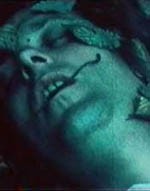 The Free Expression of Spirit
The Free Expression of Spirit
Jan Němec's conception of "pure film" in his post-1989 works
Ivana Košuličová
By the time the Soviet tanks rolled into Prague, Jan Němec's reputation rested on three remarkable features that embodied his notion of "pure film," an independent spiritual world similar to that in the films of Robert Bresson, Andrei Tarkovsky, Luis Buñuel or Alain Resnais. Every part of the film points to the creator, the "authorial subject" that stands behind the film. The story, space, time, actors and camera all have an unusual and specific qualities compared to those which we are used to seeing in ordinary narrative films.
This promising start to his career was soon curtailed, however, in the repressive post-Prague Spring era of Normalization. Barred from working in film, he made could only work in television (Náhrdelník melancholie / Necklace of Melancholy, 1968) or in film but against the wishes of the authorities (Mutter und Sohn / Mother and Son, made in Amsterdam in 1967).
In 1974, Němec was forced to leave the country with the threat of criminal prosecution. He went first to Western Germany, then to France, Holland and Sweden, before settling in 1977 in California.
In 1975, he adapted Kafka's short story "Metamorphosis" for German television, using a subjective camera, in which the spectator sees everything from the main protagonist's viewpoint. The same year, Němec also made his only feature film in exile, Das Rückendekollete (The Low-cut Back). The story takes place during the 1930s in France at the time of the Spanish and Hitler's rise to power in Germany, and the action takes place at a fancy dress ball where the characters play a game that ends in murder. The film was presented at the Cannes film festival but failed to attract praise from the critics.
Towards the end of the 1980s, Němec's fortunes started to reverse, with him making important documentaries on the 1938 Munich crisis for the BBC (True Stories: Peace in Our Time?, 1988) and on the Polish poet and Nobel Laureate Czesław Miłosz for a San Francisco-based station (The Poet Remembers, 1989). He also acted as a special advisor for Philip Kaufman's film version of The Unbearable Lightness of Being (1988) and acted in Steven Kovacs's film '68 (1988).
A return to directing
But it was not until the fall of Communism that Němec's feature film 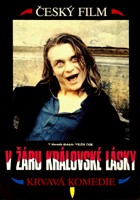 career—and his exploration of "pure film"—could take off again. At the first signs of political change Němec headed back to his homeland, and the following year, 1990, he made his first full-length feature in 15 years, V žáru královské lásky (The Flames of Royal Love). It's a fantastic story, based on the book Utrpení knížete Sternenhocha (The Sufferings of Prince Sternenhoch) by the Czech writer and philosopher Ladislav Klíma. career—and his exploration of "pure film"—could take off again. At the first signs of political change Němec headed back to his homeland, and the following year, 1990, he made his first full-length feature in 15 years, V žáru královské lásky (The Flames of Royal Love). It's a fantastic story, based on the book Utrpení knížete Sternenhocha (The Sufferings of Prince Sternenhoch) by the Czech writer and philosopher Ladislav Klíma.
V žáru královské lásky tells the story of Prince Sternenhoch and his wife Helga. But Helga starts hating her husband immediately after the wedding. She finds a lover, leads a revolution against the prince and is disgusted by just looking at him. The prince kills her, but then his conscience causes him to lose his mind and he dies too.
The film caused discomfort among the critics, as well as audiences: a fate that also befell Klíma's original novel. Stylization, bizarre story lines, verbal vulgarisms, time and space splitting, mixing professional and amateur actors, placement of a strange story in modern-day Prague, a television transmitter as a royal palace; these are just a few things that provoked immediate distrust in the film.
Němec's next film, Jméno kódu Rubín (Code Name Ruby, 1997), garnered an even less favorable critical response. The film is an alchemistic mystification about a search for the philosopher's stone supposedly created by special ingredients. A girl, Rubín, and a young man, Michal, looking for this secret, and they do not know that it is them and their love that are the last elements to the alchemical recipe.
The most recent of Němec's films Noční hovory s matkou (Night Talks , 2000) had its premiere on the Internet last December. A 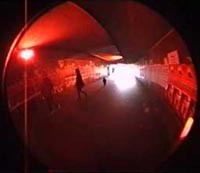 with Motherrevised version of the film, altered to take in the comments of those who saw the Internet premiere, was screened as part of the nationally touring Febiofest film festival and also at the Plzeň film festival, and is expected to be distributed in DVD format in the near future. with Motherrevised version of the film, altered to take in the comments of those who saw the Internet premiere, was screened as part of the nationally touring Febiofest film festival and also at the Plzeň film festival, and is expected to be distributed in DVD format in the near future.
Noční hovory s matkou is Jan Němec's stylized autobiography, in an open, confessional style. He talks to characters such as his mother, an eye doctor, his ex-wife Ester Krumbachová, and his friend, a film director named Pavel Juráček, all of whom have passed away. During the way through Prague, from Vaclavské náměstí to a crematorium he recalls his life and his friends.
When mention is usually made of Němec and "pure film," it's usually with reference to his 1960s works. Yet these three films made since 1989 offer an interesting window on this concept and show how Němec is extending and developing ideas that first appeared in his more famous work, which has acheived more critical attention.
Fragments of time and space
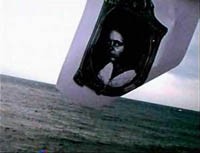 All of Němec's films are based on a simple story. But every seemingly simple action is presented in a wealth of different times and spaces, visual deformations, rapid editing, diversions to visions, hallucinations and memories, all of which create a dreamlike structure for his films. All of Němec's films are based on a simple story. But every seemingly simple action is presented in a wealth of different times and spaces, visual deformations, rapid editing, diversions to visions, hallucinations and memories, all of which create a dreamlike structure for his films.
Behind the surface story a stylized world is born, where reality, memories and dreams float together and unite. Even though every Němec film is original and specific, the director always creates a fictious, dreamy world that in no way imitates reality. The whole film is his original testimony, from the first to the final shot, all the elements revealing the single authorial subject that stands behind the film.
In Němec's films, space becomes, to use the term of French anthropologist Pascal Augé, "any-space-whatever" (un espace quelconque). The concept is explained in Gilles Deleuze's book Cinema 1: The Movement-Image:
It is a perfectly singular space, which has merely lost its homogeneity, that is, the principle of its metric relations or the connection of its own parts, so that the linkages can be made in an infinite number of ways. It is a space of virtual conjunction, grasped as pure locus of the possible. [1]
Similarly to Robert Bresson, Jan Němec builds a space piece by piece, with no firm connections to reality. Each of the shots is a fragment that coalesces with the others with no relation to the objective reality of objects, they are a series of "visual optical effects," "visual variations" and a "set of singularities."
Deleuze's analysis of Joris Ivens's film Regen (Rain, 1929) gives us a key to understanding the space found in the films of Jan Němec:
And neither is the rain the concept of rain nor the state of a rainy time and place. It is a set of singularities which presents the rain as it is in itself, pure power or quality which combines without abstraction all possible rains and makes up the corresponding any-space-whatever. [2]
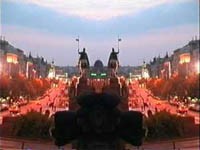 Even though Němec's films are independent of reality, Prague became a leitmotif in his work. However, it is, once again, not the real Prague but an eternal place, the town-universe, the town-cosmos, the very center of the world. Modern-day Prague serves, for him, as the residence of Prince Sternenhoch, as well as the place of Rubín's coronation. Prague is portrayed as a silent witness of history, the symbol of memory, where lonely Honza walks with his visions and memories. Even though Němec's films are independent of reality, Prague became a leitmotif in his work. However, it is, once again, not the real Prague but an eternal place, the town-universe, the town-cosmos, the very center of the world. Modern-day Prague serves, for him, as the residence of Prince Sternenhoch, as well as the place of Rubín's coronation. Prague is portrayed as a silent witness of history, the symbol of memory, where lonely Honza walks with his visions and memories.
Time is unimportant, unspecified, universal and mystical. It is a kind of symbolic, original time, which includes past, present and future, memories, experiences, dreams and hallucinations.
In Démanty noci (Diamonds of the Night, 1964), we suspect the concrete time is that of the Second World War, but it is basically a timeless story almost completely rid of historical details. Both men run in simple ragged clothes, not in the striped apparel of a concentration camp prisoner. This particular connection is expressed only by the letters KL (Konzentrations Lager) to be seen on their coats. An officer in German uniform appears only in one shot. All of the old men wear their Sunday best, which only escalates the grotesque, bizarre character of the scene. This inspired choice by costume designer Ester Krumbachová helps articulate Němec's vision. The absurd drama of the film O slavnosti a hostech (The Party and the Guests, 1966) is also timeless.
Němec's first post-1989 film, V žáru královské lásky is situated in contemporary Prague. In spite of this, the film still presents the magical, demonic, and bizarre world that Klíma created in his original story, which was set in the dark German woods at the beginning of the 20th century.
Jméno kódu Rubín switches between time lines. It alternates between original archival footage from the Second World War, fragments of documentaries showing Václav Havel honoring war veterans at the beginning of the 1990s and images of modern-day Prague, where Michal and Rubín begin their search for the philosophers' stone. Mystifying commentary takes the factuality of each shot and transforms it into just another baffling element of the game.
His film, Noční hovory s matkou, takes us into different time lines once more. Images and visions of the past and present are connected in Honza's mind. We see his memories (the German occupation, the air attack of Vinohrady, the Russian invasion in 1968, the Velvet Revolution of 1989), his images (the interview with his mother) and his perception of modern Prague.
Manipulation and degradation
Very often in Němec's films, the manipulative actions of some men beget the degradation of others. In Sousto (A Loaf of Bread, 1960), Němec's graduation film, the degradation of the human spirit is shown against the backdrop of the Second World War. In Démanty noci, the degradation of man bears resemblance to a hunting game. O slavnosti a hostech revolves around the idea of manipulation: the guests at a dinner party decide to hunt a man who expressed his disagreement with the others by keeping silent.
In the 1990s, the theme of manipulation and degradation takes a different form. In V žáru královské lásky, almost all characters alternate between the role of manipulator and the position of the humiliated. At the beginning of the film, Princess Helga (Ivana Chýlková) appears to be a humiliated personality,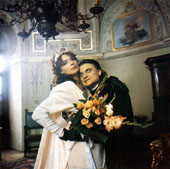 but after her marriage with Prince Sternenhoch (Vilém Čok), it is she who manipulates, humiliates and abuses her husband; she is also the head of a revolution against the Prince. but after her marriage with Prince Sternenhoch (Vilém Čok), it is she who manipulates, humiliates and abuses her husband; she is also the head of a revolution against the Prince.
We are told that, in the end, she was pugnacious and individualistic-just as her father raised her when she was a child. A downfall of his paternal authority and the frequent beatings that she received from him made her disguise herself and assume the role of a humiliated girl. In the course of the marriage to Prince Sternenhoch she purposely manipulates her husband, but, at the same time, she continues to find herself in a humiliating position in her relationship with a servant (Bolek Polívka) who proves his masculinity through insults and beatings. He is the only one she respects, so she willingly subordinates herself to him.
Prince Sternenhoch exists, most of the time, in the role of the humiliated. He is happy when he plays with a ping-pong ball and when he sees the "monster-baby" that the Princess gave birth to. On rare occasions, however, he presents himself as a manipulator—in the scene with Helga's father, for example, or after the disclosure of Helga's infidelity. Helga's anger, the hate and scorn that she feels towards her husband force him to act and prove his masculine force, so he kills her.
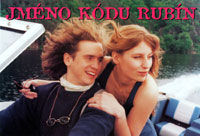 In contrast to this couple, Michal and Rubín, the heroes of Němec's following film, Jméno kódu Rubín, are connected by a mutual respect, courtesy, love and a shared quest. The manipulation here is of a different kind. It is a manipulation of the viewer. It is a game. The director presents the spectator with real documents reorganized by fictional narration. He combines "objective truth" and lies; he creates a mystification. In contrast to this couple, Michal and Rubín, the heroes of Němec's following film, Jméno kódu Rubín, are connected by a mutual respect, courtesy, love and a shared quest. The manipulation here is of a different kind. It is a manipulation of the viewer. It is a game. The director presents the spectator with real documents reorganized by fictional narration. He combines "objective truth" and lies; he creates a mystification.
From mystification to autobiography
Mystification is related to the breaking of space and time and is increasingly present in Němec's more recent films. The composition of concrete events creates a new, peculiar world that is independent of reality.
The film V žáru královské lásky happens in contemporary Prague at the beginning of the 90s. It represents Prince Sternenhoch as a ruler of Prague and a television transmitter as his abode. Fragments of reality are depicted with new, often ironic meanings.
The mystification increases even more in Němec's following film, Jméno kódu Rubín with the use of authentic footage from various moments in the country's history, accompanied by a commentary that makes a connection between Nazi aggressions and the search for the old alchemic secrets that would allow the finder to get control over the world. Fortunately, the Nazis don't succeed, and Rubín is the one who finds the ancient secret and is crowned queen.
For Němec this mystical search for the philosopher's stone represents the eternal searching of a human being. The director memorializes our past by way 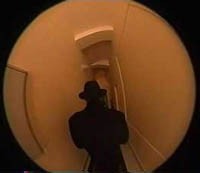 of a "poisoned sweet" (formou jedovatých hašlerek) [3]he leads us out of our equanimity, comfort and unconcern. The bombed out Emauzy cloisters which we see in the last scene of the film, are a symbol of the past. of a "poisoned sweet" (formou jedovatých hašlerek) [3]he leads us out of our equanimity, comfort and unconcern. The bombed out Emauzy cloisters which we see in the last scene of the film, are a symbol of the past.
In Němec's latest film, Noční hovory s matkou, the director abandons mystification and substitutes it by author stylization and personal testimony. We can even talk about demystification here. Commenting on this film, Helena Bendová writes:
...the figure of Jan Němec as a man and also as a film director is being demystified during the film: the judgments and memories of his relatives (mother, ex-wife Ester Krumbachová) as well as his own are often cruel and not flattering... [4]
The leitmotif of the game
In Němec's films, mystification and manipulation unite to create the motif of the game—a very important motif that changes with time and takes on new qualities and meanings.
In the 1960s, he was interested in games that had their own rules and were disrupted by individuals. This interest is most visible in O slavnosti a hostech. The guests, a community of "players," meet at the dinner party and play a game. But one of them refuses to play and his decision destroys the whole world of the game and its rules. And therefore he has to be punished.
As Ivan Klimeš says in his article "Hra"("The Game"): "every game has its rules. There are only two types of player who are outside the community of players: the one who is cheating, and the one who refuses to join the game." Klimeš continues with a quotation of Johan Huizinga: "the community of players forgives the cheater easier than the one who spoils the game, because he breaks the whole world of the game." [5]
In the 90s, after the fall of the Communist regime, the game changes its 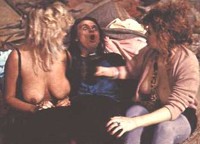 character and becomes a game with a viewer. Every film that Němec makes includes the viewer as an important component. V žáru královské lásky provokes the viewer through its shocking vulgarisms, stylized acting, bizarre story, etc. Jméno kódu Rubín achieves the same with its mystified history. The viewer receives familiar information from the documentary shots, but the director changes the meaning. character and becomes a game with a viewer. Every film that Němec makes includes the viewer as an important component. V žáru královské lásky provokes the viewer through its shocking vulgarisms, stylized acting, bizarre story, etc. Jméno kódu Rubín achieves the same with its mystified history. The viewer receives familiar information from the documentary shots, but the director changes the meaning.
Moreover, Jan Němec always counts on the viewer's ability to join in. But film as a medium can hardly arrange their mutual contact. In the case of Jan Němec's latest film Noční hovory s matkou, however, the missing communication between the author and the viewer was mitigated by the Internet and the director decided to change some moments in his film, reacting to ideas suggested by the audience.
The building blocks of altered states
The creation of an independent film world requires a number of specific building blocks. One of these is the visual deformation of a picture, which helps create an impression of dream, of non-reality. Apart from the deformation caused by editing (displacement of time and space), there is also the optical deformation induced by using extremely 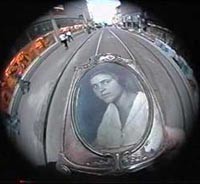 long or wide lenses. Even when the director uses digital video rather than film stock, as in case of the film Noční hovory s matkou, the pictures are stylized, deformed and bulge out. long or wide lenses. Even when the director uses digital video rather than film stock, as in case of the film Noční hovory s matkou, the pictures are stylized, deformed and bulge out.
The actors chosen are uniquely suited for the role. In many cases, they are not professional actors. The first boy in Démanty noci was Antonín Kumbera, a railway worker by trade; In V žáru královské lásky, Prince Sternenhoch was played by extravagant singer Vilém Čok; and Rubín from Jméno kódu Rubín by Lucie Rejchrtová, a student at the Pedagogical Faculty at Prague's Charles University.
Even in Němec's most recent film, Noční hovory s matkou, the main role is played by an amateur actor-namely Jan Němec himself. Němec himself has expounded on this principle:
I did not take using amateurs from the neorealists, but from Bresson. He said that even an exquisite theatrical actor lies; he plays somebody else everyday, he glues on his wig, which disqualifies him for performing in an honest film. I concluded my method from here: I find a type of person and I make him an actor for one single story. I definitely do not search for a naturshchik [natural actor] that is typologically close to the role, which is a method favored by neorealists or by Miloš Forman, who used people that were very similar to the characters they played in looks and social insertion. I was always interested in the Bressonian distance between actor and his role. [6]
A new spiritual world
All of the above-mentioned components and themes of Němec's films—a simple story, fragments of time and space, the theme of manipulation and degradation, mystification, game, visual deformation, amateur actors—all of these together create the circumstances needed for a completely different perception of film, 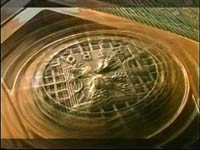 a perception that is not based on the usual identification of the viewer with the film characters but evokes, instead, the effect of alteration. a perception that is not based on the usual identification of the viewer with the film characters but evokes, instead, the effect of alteration.
The old Brechtian model of the "epic theatre" which prevents the viewer from having emotional experiences and leads him more towards a philosophical and ethical reflection of the events presented had already been used in the films of Bresson and Tarkovsky. Like them, Němec does not want the viewer to experience emotions based on the identification with film characters. He tries to provoke a philosophical, spiritual reflection about the themes that are presented in a film.
To achieve this, he does not use the "slowness" typical of the films of
Andrei Tarkovsky, but employs a supreme stylization achieved by using all of the aforementioned components. He creates a new specific spiritual world that reflects his thoughts and fears and testifies not only about himself, but also gives a general testimony about human existence. His films made since his return to the Czech Republic, thus, continue on from his 1960s work in adhering to these principles.
Ivana Košuličová, 14 May 2001
Moving on:
Footnotes:
1. Deleuze, Gilles (trans Tomlinson,Hugh and
Habberjam, Barbara): Cinema 1: The Movement-Image, Minneapolis, 1986, p 109
2. ibid, p 111
3. Fryš, Miloš & Němec, Jan: "Život filmu, který není vidět", in Film a doba 1-2/1997, p 10 (see the translated version in this week's issue of CER)
4.Bendová, Helena: "Jan Němec—verze čtyři" in Literární noviny, 21.3.2001/12, p 10.
5. Klimeš, Jan: "Hra" in Filmový sborník historický 4., NFA, Praha 1993, p 58.
6. Cieslar, Jiří: "Když si film o něco začne říkat (Rozhovor s Janem Němcem)", in Film a doba No 2/2000, p 81.
|
|




 career—and his exploration of "pure film"—could take off again. At the first signs of political change Němec headed back to his homeland, and the following year, 1990, he made his first full-length feature in 15 years, V žáru královské lásky (The Flames of Royal Love). It's a fantastic story, based on the book Utrpení knížete Sternenhocha (The Sufferings of Prince Sternenhoch) by the Czech writer and philosopher Ladislav Klíma.
career—and his exploration of "pure film"—could take off again. At the first signs of political change Němec headed back to his homeland, and the following year, 1990, he made his first full-length feature in 15 years, V žáru královské lásky (The Flames of Royal Love). It's a fantastic story, based on the book Utrpení knížete Sternenhocha (The Sufferings of Prince Sternenhoch) by the Czech writer and philosopher Ladislav Klíma.  with Motherrevised version of the film, altered to take in the comments of those who saw the Internet premiere, was screened as part of the nationally touring Febiofest film festival and also at the Plzeň film festival, and is expected to be distributed in DVD format in the near future.
with Motherrevised version of the film, altered to take in the comments of those who saw the Internet premiere, was screened as part of the nationally touring Febiofest film festival and also at the Plzeň film festival, and is expected to be distributed in DVD format in the near future. All of Němec's films are based on a simple story. But every seemingly simple action is presented in a wealth of different times and spaces, visual deformations, rapid editing, diversions to visions, hallucinations and memories, all of which create a dreamlike structure for his films.
All of Němec's films are based on a simple story. But every seemingly simple action is presented in a wealth of different times and spaces, visual deformations, rapid editing, diversions to visions, hallucinations and memories, all of which create a dreamlike structure for his films. Even though Němec's films are independent of reality, Prague became a leitmotif in his work. However, it is, once again, not the real Prague but an eternal place, the town-universe, the town-cosmos, the very center of the world. Modern-day Prague serves, for him, as the residence of Prince Sternenhoch, as well as the place of Rubín's coronation. Prague is portrayed as a silent witness of history, the symbol of memory, where lonely Honza walks with his visions and memories.
Even though Němec's films are independent of reality, Prague became a leitmotif in his work. However, it is, once again, not the real Prague but an eternal place, the town-universe, the town-cosmos, the very center of the world. Modern-day Prague serves, for him, as the residence of Prince Sternenhoch, as well as the place of Rubín's coronation. Prague is portrayed as a silent witness of history, the symbol of memory, where lonely Honza walks with his visions and memories.  but after her marriage with Prince Sternenhoch (Vilém Čok), it is she who manipulates, humiliates and abuses her husband; she is also the head of a revolution against the Prince.
but after her marriage with Prince Sternenhoch (Vilém Čok), it is she who manipulates, humiliates and abuses her husband; she is also the head of a revolution against the Prince.  In contrast to this couple, Michal and Rubín, the heroes of Němec's following film, Jméno kódu Rubín, are connected by a mutual respect, courtesy, love and a shared quest. The manipulation here is of a different kind. It is a manipulation of the viewer. It is a game. The director presents the spectator with real documents reorganized by fictional narration. He combines "objective truth" and lies; he creates a mystification.
In contrast to this couple, Michal and Rubín, the heroes of Němec's following film, Jméno kódu Rubín, are connected by a mutual respect, courtesy, love and a shared quest. The manipulation here is of a different kind. It is a manipulation of the viewer. It is a game. The director presents the spectator with real documents reorganized by fictional narration. He combines "objective truth" and lies; he creates a mystification. of a "poisoned sweet" (formou jedovatých hašlerek) [
of a "poisoned sweet" (formou jedovatých hašlerek) [ character and becomes a game with a viewer. Every film that Němec makes includes the viewer as an important component. V žáru královské lásky provokes the viewer through its shocking vulgarisms, stylized acting, bizarre story, etc. Jméno kódu Rubín achieves the same with its mystified history. The viewer receives familiar information from the documentary shots, but the director changes the meaning.
character and becomes a game with a viewer. Every film that Němec makes includes the viewer as an important component. V žáru královské lásky provokes the viewer through its shocking vulgarisms, stylized acting, bizarre story, etc. Jméno kódu Rubín achieves the same with its mystified history. The viewer receives familiar information from the documentary shots, but the director changes the meaning.  long or wide lenses. Even when the director uses digital video rather than film stock, as in case of the film Noční hovory s matkou, the pictures are stylized, deformed and bulge out.
long or wide lenses. Even when the director uses digital video rather than film stock, as in case of the film Noční hovory s matkou, the pictures are stylized, deformed and bulge out.  a perception that is not based on the usual identification of the viewer with the film characters but evokes, instead, the effect of alteration.
a perception that is not based on the usual identification of the viewer with the film characters but evokes, instead, the effect of alteration. 
